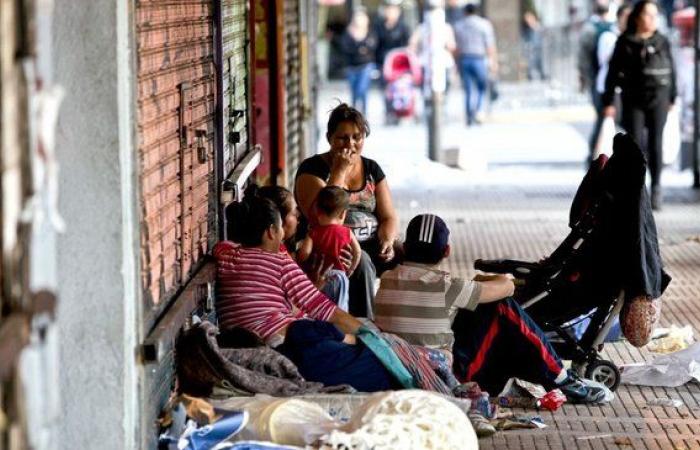In the first three months of Javier Milei’s Government, homelessness in the city of Buenos Aires the population of this district shot up from 12.2 to 15.3%a number that expresses a jump of 3.1% of new homeless people and It is the strongest quarterly increase since the coronavirus pandemic. In addition, it is the indicator highest indigence recorded in that district in the last 10 years.
Amid a sharp drop in employmentwhich according to numbers from the National Institute of Statistics and Censuses (Indec) itself amounts to 437,000 fewer jobs in the first three months of the year – an average of 5,000 jobs per day –the Buenos Aires City Government released poverty and indigence figures in that district. The General Directorate of Statistics and Census of the City of Buenos Aires (Degesyc) reported that in the first quarter of 2024 there are 471,000 people who are destitutea number that corresponds to the 15.3% of the district’s population.
As detailed, in the fourth quarter of 2023 (in December of last year) the number of homeless people was 12.2% of the population, which means that in the first three months of Milei’s administration and the head of the Buenos Aires Government, Jorge Macri, this indicator increased 3.1%, a jump that is located only behind that recorded in the second quarter of 2020. At that time The strongest repercussions of the economic restrictions caused by the coronavirus pandemic were being experiencedwhich generated a quarterly increase in poverty of 7.9%.
Besides, This indicator of 15.3% of homeless people is the highest in the last decadewhen this registry began to be carried out with this statistical modality. For the first quarter of 2015, a total of 4.5% of the population in a situation of indigence was surveyed In Buenos Aires city, more than three times the current number.
According to the report, those households in a state of indigence are those that have “a total monthly income that is not enough to cover the Basic Food Basket”located in March of this year in $442,239 for households composed of a woman and a man aged 35 years, both economically active and homeowners, with two male children aged 9 and 6.
“In a context of reduced activity and employment rates, the expansion of labor and non-labor income is not sufficient to compensate for price increases. Consequently, the living conditions of the City’s households deteriorate in in a generalized way, affecting access to basic baskets and reducing the weight of the middle and well-off sectors,” the organization explained.


